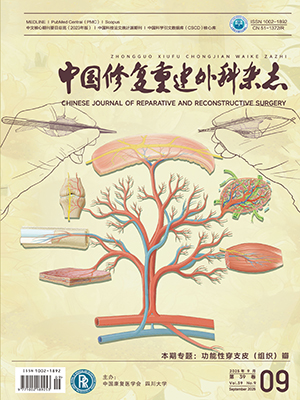Objective To explore the effectiveness of fixation of atlas translaminar screws in the treatment of atlatoaxial instability. Methods A retrospective analysis was made on the clinical data of 32 patients with atlatoaxial instability treated with atlantoaxial trans-pedicle screws between March 2007 and August 2009. Of them, 7 patients underwent atlas translaminar screws combined with axis transpedicle screws fixation because of fracture types, anatomic variation, and intraoperative reason, including 5 males and 2 females with an average age of 48.2 years (range, 35-69 years). A total of 9 translaminar screws were inserted. Injury was caused by traffic accident in 4 cases, falling from height in 2 cases, and crushing in 1 case. Two cases had simple odontoid fracture (Anderson type II), and 5 cases had odontoid fracture combined with other injuries (massa lateralis atlantis fracture in 2, atlantoaxial dislocation in 1, and Hangman fracture in 2). The interval between injury and operation was 4-9 days (mean, 6 days). The preoperative Japanese Orthopaedic Association (JOA) score was 8.29 ± 1.60. Results The X-ray films showed good position of the screws. Healing of incision by first intention was obtained, and no patient had injuries of the spinal cord injury, nerve root, and vertebral artery. Seven cases were followed up 9-26 months (mean, 14 months). Good bone fusion was observed at 8 months on average (range, 6-11 months). No loosening, displacement, and breakage of internal fixation, re-dislocation and instability of atlantoaxial joint, or penetrating of pedicle screw into the spinal canal and the spinal cord occurred. The JOA score was significantly improved to 15.29 ± 1.38 at 6 months after operation (t=32.078, P=0.000). Conclusion Atlas translaminar screws fixation has the advantages of firm fixation, simple operating techniques, and relative safety, so it may be a remedial measure of atlatoaxial instability.
Citation: WANG Guoyou,FU Shijie,SHEN Huarui,GUAN Taiyuan,XU Ping.. CLINICAL APPLICATION OF ATLAS TRANSLAMINAR SCREWS FIXATION IN TREATMENT OF ATLATOAXIAL INSTABILITY. Chinese Journal of Reparative and Reconstructive Surgery, 2013, 27(10): 1210-1213. doi: 10.7507/1002-1892.20130265 Copy
Copyright © the editorial department of Chinese Journal of Reparative and Reconstructive Surgery of West China Medical Publisher. All rights reserved




